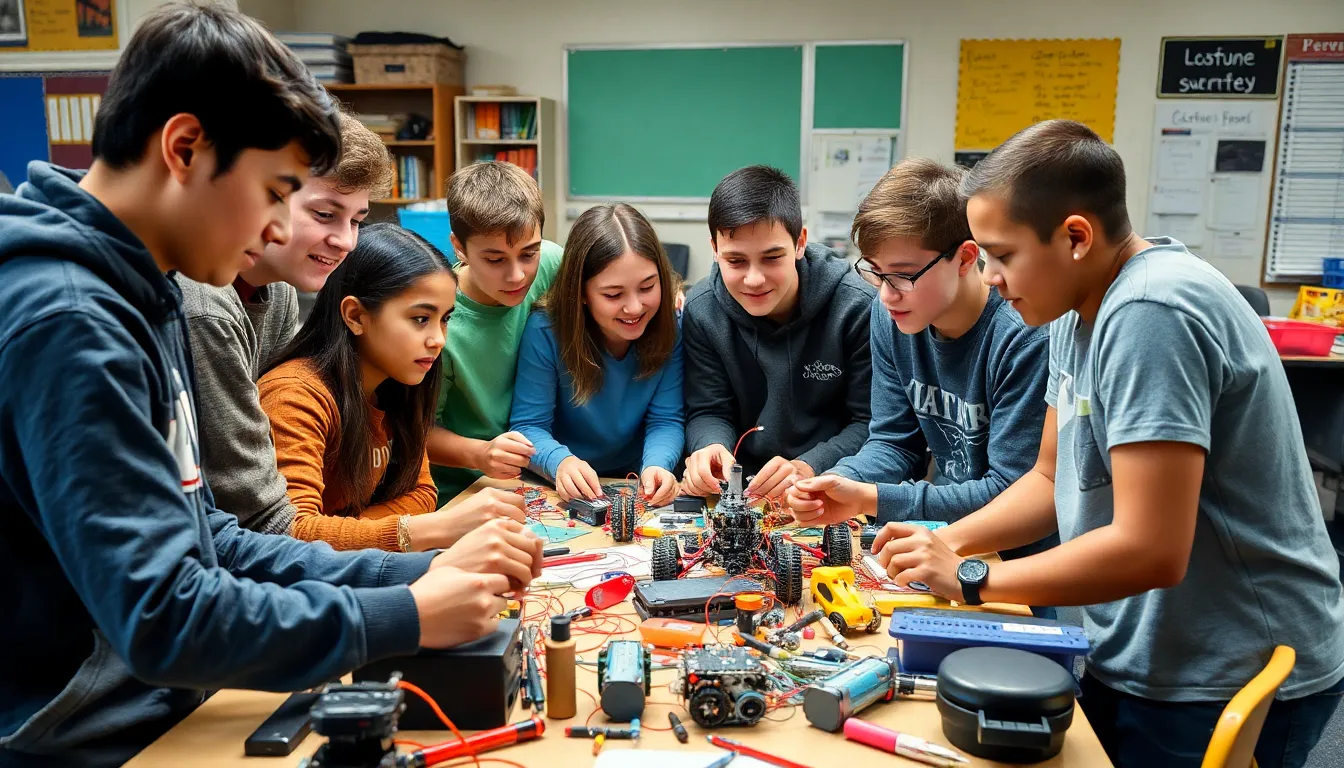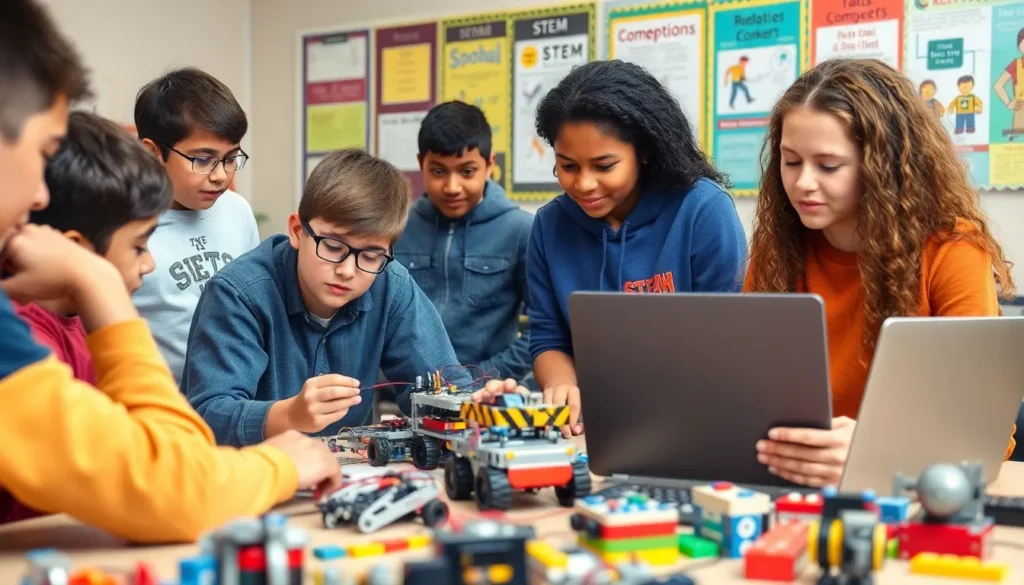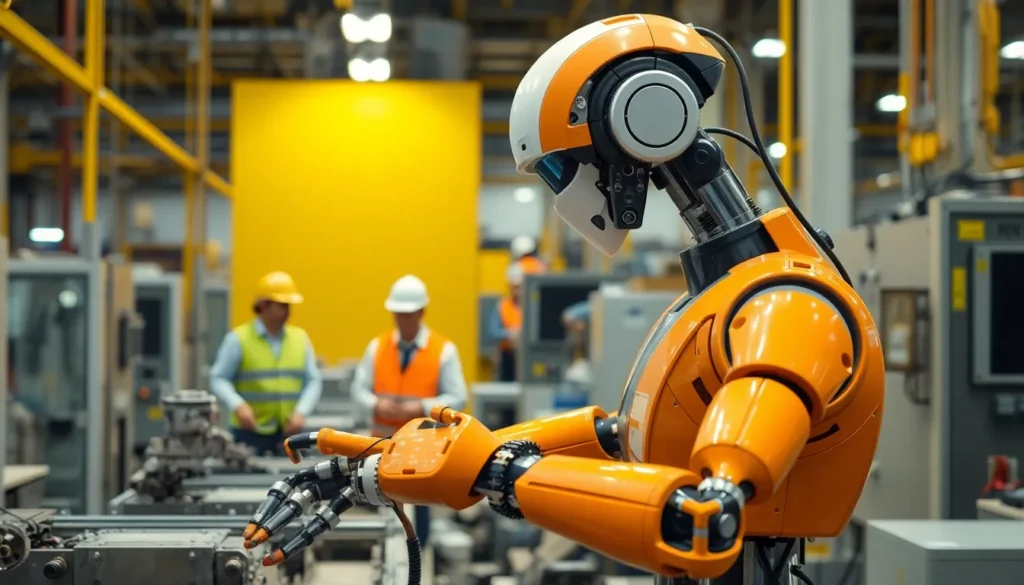Middle school robotics is where imagination meets engineering, and it’s a playground for young innovators. Picture this: a group of kids, armed with creativity and a few circuit boards, transforming everyday materials into robots that can dance, race, or even fetch snacks (if only!). It’s not just about building machines; it’s about igniting a passion for STEM that could one day lead to the next big tech breakthrough.
Middle School Robotics
Middle school robotics engages students in hands-on learning experiences. Creativity flourishes as they build robots using everyday materials. Projects often include tasks like dancing, racing, and fetching snacks, providing practical applications for theoretical knowledge.
Robotics programs help develop essential skills, including coding, problem-solving, and teamwork. These skills are fundamental in fostering a passion for STEM disciplines. Schools often integrate robotics into curriculums through clubs, competitions, or specialized classes.
Participation in robotics competitions encourages innovation and competitive spirit. Teams collaborate to design and program robots that solve specific challenges. Opportunities for mentorship with experienced engineers arise during these events, enhancing students’ learning experiences.
Robotics kits play a crucial role in sparking interest. Kits like LEGO Mindstorms and VEX Robotics offer accessible platforms for students. Through these tools, students learn not just to construct, but also program robots.
Additionally, teachers recognize the significance of incorporating robotics into their teaching strategies. Classes that include robotics foster engagement by making STEM subjects exciting and relatable. Resources like online tutorials and community workshops provide additional support for budding engineers.
Such a comprehensive approach ensures that middle school robotics nurtures future innovators, preparing them for future technological advancements. Students not only create robots; they explore concepts that will shape the world.
Benefits of Middle School Robotics

Middle school robotics offers significant advantages for students, equipping them with valuable skills and promoting effective collaboration.
Skill Development
Students gain essential skills by engaging with robotics programs. They learn coding, which provides a foundation for understanding programming languages. Problem-solving abilities enhance as students troubleshoot design issues. Critical thinking develops through the exploration of engineering concepts. Hands-on experience with robotics kits fosters construction skills, allowing creativity to thrive. The integration of robotics into the curriculum ensures that students acquire relevant and practical knowledge. Such exposure often leads to greater confidence in STEM disciplines, making it easier for students to pursue future opportunities in technology and engineering fields.
Teamwork and Collaboration
Teamwork plays a crucial role in middle school robotics. Students collaborate effectively as they work together to design and build robots. Effective communication skills are cultivated as team members share ideas and delegate tasks. Collaboration with peers encourages innovation, often leading to unique solutions to challenges. Participating in competitions further emphasizes teamwork, requiring students to strategize and execute plans collectively. Mentorship from experienced engineers allows students to learn from more knowledgeable individuals, enhancing collaborative efforts. This environment not only strengthens relationships but also prepares students for future group dynamics in education and the workplace.
Popular Robotics Programs
Middle school robotics programs provide students with diverse opportunities to explore engineering and technology. These programs encourage creativity and problem-solving among young innovators.
VEX Robotics
VEX Robotics engages students with hands-on projects that stimulate interest in science and technology. Participants build and program their robots for competitions, working within specific challenges. Teams have access to a multitude of resources, such as online tutorials and community support. Challenges vary year by year, pushing participants to adapt their designs and strategies. Through collaboration, students develop essential skills, including critical thinking and teamwork. Schools increasingly incorporate VEX Robotics into their curricula, reinforcing STEM learning in a practical manner.
FIRST LEGO League
FIRST LEGO League captivates students by combining robotics with a fun, competitive atmosphere. In this program, teams of middle schoolers design and construct robots using LEGO elements. Each year, teams tackle a unique theme, which encourages creativity and innovation. Participants learn to program their robots using user-friendly software, enhancing their coding skills. Collaboration plays a key role as students work together to solve complex challenges. Educators find FIRST LEGO League to be a valuable tool for teaching problem-solving and teamwork. As a result, this program significantly contributes to students’ interest in pursuing further STEM opportunities.
Challenges in Middle School Robotics
Middle school robotics faces several challenges that affect program effectiveness and student engagement.
Funding and Resources
Limited funding poses a significant obstacle for many middle school robotics programs. Schools often struggle to secure financial support for purchasing robotics kits, equipment, and materials. Variability in funding levels can lead to uneven access to resources across different schools. Grant opportunities exist, yet schools may lack the time or expertise to apply successfully. Many robotics teams depend on community sponsorships, which can fluctuate over time. Schools that prioritize securing consistent funding tend to provide better experiences for students.
Curriculum Integration
Integrating robotics into the curriculum presents various difficulties. Teachers may lack training or background in STEM subjects, making it hard to provide effective instruction. Curricular constraints often limit the time available for robotics projects. Challenging state standards may restrict the flexibility needed to incorporate hands-on activities. Collaborating with other subjects can enhance student learning but requires planning and coordination. Schools with well-integrated robotics programs tend to create more meaningful learning experiences for students.
Future of Middle School Robotics
Innovation in middle school robotics will deepen as technology advances. Educators are expected to adopt cutting-edge tools, enhancing learning experiences for students. Partnerships with tech companies can create opportunities for schools to access the latest resources and materials. A greater emphasis on coding languages like Python or JavaScript will likely emerge, enabling students to tackle complex programming tasks.
Increased availability of online courses will support self-paced learning. Access to virtual competitions can further expand student participation, allowing them to showcase their skills to a broader audience. Investment in teacher training programs is essential, ensuring instructors are well-equipped to guide students through evolving robotics challenges.
Health and safety considerations may lead to the development of robotics that assist in everyday tasks, positioning students as more than just builders but active participants in creating solutions. Introductions of collaborative robotics projects will cultivate a spirit of teamwork beyond school walls, engaging local communities in the process.
Moreover, integrating artificial intelligence into robotics education will spark interest. As students experiment with algorithms, they gain skills vital for future careers in technology. With the continuous push for STEAM (Science, Technology, Engineering, Arts, Mathematics) integration, artistic elements will enrich robotic designs, emphasizing creativity alongside technical skills.
Overall, the trajectory for middle school robotics indicates a robust future. Innovations in curriculum and resources will cultivate young minds, ultimately preparing them for a thriving career in STEM fields.
Conclusion
Middle school robotics stands as a powerful catalyst for nurturing young innovators. By engaging students in hands-on projects and competitions, these programs ignite a passion for STEM that can lead to exciting future careers. The skills developed through robotics—coding, problem-solving, and teamwork—are essential for today’s technological landscape.
As educators embrace innovative teaching methods and advanced tools, the potential for growth in middle school robotics is immense. With increased collaboration between schools and tech companies, students will gain access to cutting-edge resources that enhance their learning experiences.
The future looks bright for middle school robotics, promising to empower the next generation of thinkers and creators.



